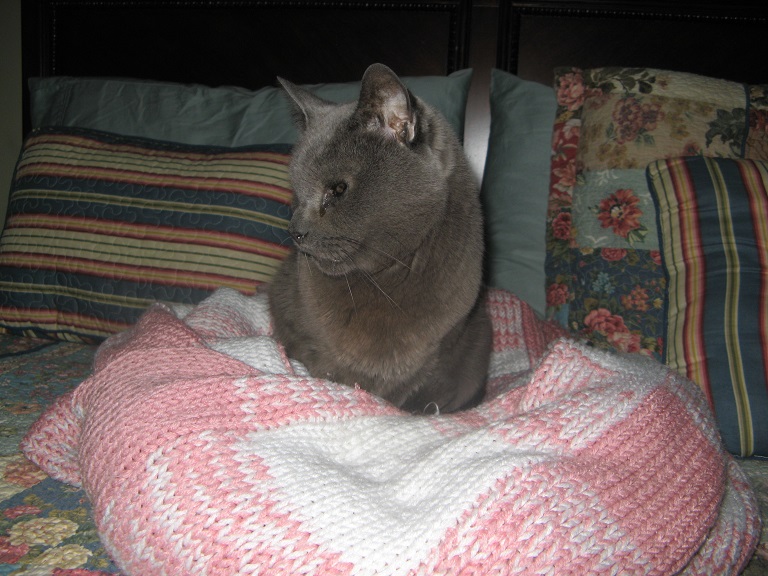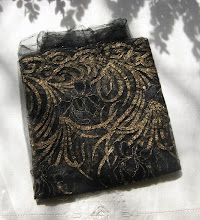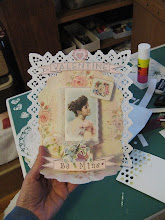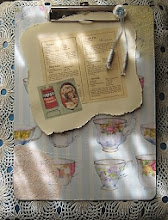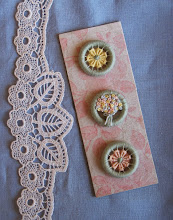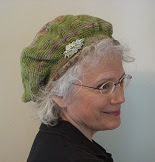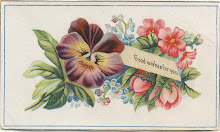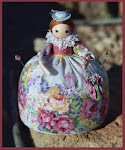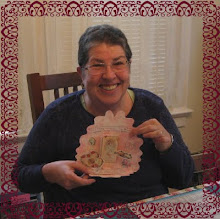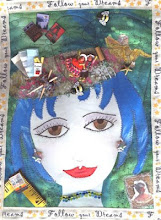Ms. Weghorst will also teach a Handwoven Jewelry workshop during the fiber festival, on Saturday, January 21 from 10-4. Pin loom weaving will be used to create elegant, one-of-a-kind pins and neckpieces. Trained as a professional artist at Ball State University and the Art Institute of Chicago (MFA, Fiber Arts), Ms. Weghorst has exhibited her work and taught workshops throughout the United States. Her tapestries have been commissioned for a wide range of public architectural settings, including corporate, government, university and religious institutions.
Here are two examples of Linda's Woven Jewelry pieces.


Angela Schneider weaves, knits, spins and does just about every textile technique. She teaches for shops and guilds and exhibits in art shows in Memphis and regionally. Angela always has multiple projects in progress and classes on the calendar, and she will be teaching two classes during the Fiber Arts Festival. Below is a photo of Wavy Wedges, a project which takes short-rows to the extreme with a trick of geometry to create a unique 'wavy wedges' scarf.
Knitting is simple, but with a twist that makes it anything but plain. Only basic knitting skill required – cast on, knit and bind off. Creative yarn selection makes the design pop. Supplies: 200 yds worsted-weight yarns: Solid, variegated, two colors or two balls of slow color-migrating yarn. Size 8 needles or size to get a comfortable gauge with selected yarns. This class is scheduled for 2-5 Saturday, January 21.
 Angela will also teach Kumihimo Braiding, a traditional craft in many cultures. Braids can be used in many applications, from jewelry to accessories to home décor. Students will work with both hand-held disks and marudai (braiding stools). Everyone will start with a sampler braid and choose a pattern for a small project – bracelet or keychain. All supplies will be provided in a kit. This class is designed for ages 10 - adult, and will be held Saturday, January 21 from 9-12.
Angela will also teach Kumihimo Braiding, a traditional craft in many cultures. Braids can be used in many applications, from jewelry to accessories to home décor. Students will work with both hand-held disks and marudai (braiding stools). Everyone will start with a sampler braid and choose a pattern for a small project – bracelet or keychain. All supplies will be provided in a kit. This class is designed for ages 10 - adult, and will be held Saturday, January 21 from 9-12. Below is a photo of two pieces, a bracelet and a necklace that I made after taking Angela's class. The necklace (choker style, with end caps at the back) was made with specialty yarns.
Below is a photo of two pieces, a bracelet and a necklace that I made after taking Angela's class. The necklace (choker style, with end caps at the back) was made with specialty yarns. For more information and to register for Handwoven Jewelry, Wavy Wedges, Kumihimo and many other classes, contact Knit 1 Oxford at 662-238-2829.
For more information and to register for Handwoven Jewelry, Wavy Wedges, Kumihimo and many other classes, contact Knit 1 Oxford at 662-238-2829.There will be lots of make and take for kids at the festival, including finger knitting, yarn bombing, and God's Eye, below.
 More animals at the festival! This year our vendors are bringing alpaca, pygora goats, angora rabbit, and a llama! Here is a photo of a baby alpaca I took at Cathy's ranch a year ago.
More animals at the festival! This year our vendors are bringing alpaca, pygora goats, angora rabbit, and a llama! Here is a photo of a baby alpaca I took at Cathy's ranch a year ago.












































